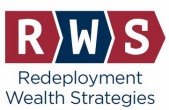It wasn’t that long ago that genuine financial advice was not available to military personnel. There may have been the rare unicorn in uniform among us who had the means to pay for an advisor, but by and large we could not get real financial advice. The way advisors were charging for it made it unaffordable. I am pleased to report those times are changing. The only thing Sean and I like more than seeing that change is being part of it. We are agents for that change. Financial planning is rapidly becoming affordable for most military families. To tell you why that is becoming true I’m going to walk you back to when (and why) it wasn’t true.
When Sean and I were young sailors nearly all ‘financial advisors’ (a.k.a. salesmen) were paid by a commission on the financial products they sold. With our small but steady paychecks military people generally couldn’t afford these high cost products, so most of the salesmen avoided us. Most, but not all. There were a couple of firms who would sell us (errrr…advise us to buy…) small-ish whole life policies and mutual funds with a front-end load. This frequently left us military-types under-insured and overpaying for our investments. I suppose the case could be made that it was better than if we had done nothing at all, but it wasn’t a good situation.
A few years later there was a revolutionary breakthrough when financial advisors started to get away from commissions and started charging their fees based on “assets under management” or AUM. The concept was simple and seemingly reasonable; the advisor charges a fee based on a percentage of the assets s/he manages, and they will take it straight out of your investment account. A typical fee is 1.25% annually. If your advisor is managing your $500,000 portfolio at that rate, then they are collecting $6,250 annually from your account. (Most likely $1,562.50 quarterly.)
Like every revolution there was collateral damage and unintended consequences. Advisors figured out in a hot minute that small accounts weren’t profitable, so they implemented account minimums. If you don’t have at least $100,000 to invest, it can be difficult to find an AUM-based advisor willing to take you as a client. Additionally, that $100,000 must be in an account the advisor can manage. It can’t be in TSP or your spouse’s 401K. Some (so-called) advisors were encouraging clients to roll their retirement plans out to IRAs the advisor could manage – even if the options in the IRA were clearly inferior to the choices in the existing retirement plan. In addition to being salesmen, many advisors were becoming asset gatherers.
The AUM revolution turned out to be of very little benefit to military families. We still couldn’t get much attention from financial advisors because we couldn’t muster the $100,000 outside-a-retirement-account minimums. They still couldn’t charge us in a way that would make it worth their while to serve us.
We are now at the beginning of a new revolution in the way financial advisors charge for their service – direct billing. This has the added impact of turning financial advisors into something even better and more valuable to the consumer. It is turning them into financial planners.
With direct billing the client can pay the advisor in one of two ways. The client can pay a subscription for the service each month, just like they pay the electric bill, the cell phone bill, the mortgage, or the rent. Or, the client can pay for the service whenever they have direct contact with the advisor, similar to how they pay a doctor or a plumber. Either way, the client is paying a 100% transparent fee from current cash flow. You don’t need assets to afford financial advice, you just need income. This fee model has the potential to make financial planning affordable to most military families. It is a game changer!
I previously mentioned the direct billing model is also turning financial advisors into financial planners. What I mean by that is financial advisors, typically compensated by AUM, have an incentive to gather assets. They are very much focused on your portfolio because that is how they make their money. They charge for portfolio management and provide financial planning as an ancillary service (if at all). Sean and I are proud to be on the leading edge of the financial planning community in figuring out this is backwards for most clients and it is especially backwards for military families. We charge you for financial planning and provide portfolio management as an ancillary service (if at all). Few military families have investment accounts we can manage. Most of the time their investments are in TSP, or the spouse’s 401K, or the children’s 529s – places we can’t manage, and probably don’t need to. Don’t mistake me, we are going to review your TSP holdings and probably make recommendations on changing the allocation, but it will be in the context of our focused efforts on your financial plan. We don’t need to have direct control over your account to make sure you are using your TSP effectively to reach your financial goals. We just need to review the account periodically and advise you accordingly.
Whether you prefer a subscription model or to be billed based on contact with the service provider is immaterial. There are ‘goods and others’ to each of those implementations of direct billing. The truly important thing to know is that it puts, for the first time, financial planning within the means of most military service members and their families. Those serving the nation are no longer destined to be under served by the financial planning community. (And it’s about d–n time!)
It will not be an overnight transition. The salesmen masquerading as financial advisors and pushing commission-based products on unsuspecting service members have made many of us wary. They damaged our trust in financial advisors, and that will take years to repair. Absent the affordability of real financial advisors for military personnel a robust self-help community has emerged. Great Americans like Doug Nordman and Kate Horrell have made it their life’s work to help as many military members and veterans make wise financial decisions as possible. The availability of great free resources will meet the needs of many military families.
We’re OK with that. Financial information should be free and easy to understand. There are still going to be plenty of folks in our tribe whose complex financial issues exceed the capacity of what is freely available. In fact, we believe there are so many people in this situation that Sean and I will not be able to serve them all. That is why we have teamed up with other military-focused financial planners to create a military study group within the XY Planning Network. This core group believes the need for genuine financial planning for military families is so great we are not treating each other as competitors. We are working together to create a community of like-minded fee-only financial advisors who are dedicated to serving the families who serve America. Long live the revolution!
If you are interested in affordable fee-only fiduciary advice from genuine financial planners, then give us a call at (757) 752-8055.

